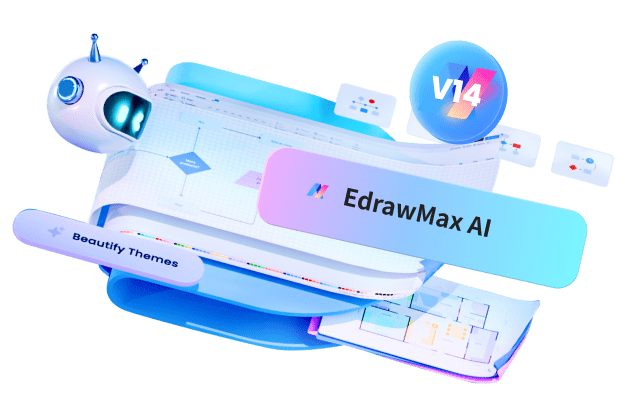Project risk management is a critical process that aims to identify, evaluate, and mitigate potential risks that could impact the success of a project. By understanding and addressing uncertainties, both positive and negative, project teams can effectively plan and execute projects, maximizing opportunities and minimizing the adverse effects of risks. This article provides insights into the key steps involved in the management of project risks.
In this article
Part 1. Overview of Project Risk Management
The methodical project risk management process of identifying, evaluating, and mitigating possible risks that might have an influence on a project’s success is known as project risk management.
It entails comprehending and evaluating both positive and negative uncertainties, as well as creating plans to take advantage of or lessen them. The objective is to maximize opportunities while reducing the possibility and effect of dangers.
Projects that are performed on schedule, within budget, and to the appropriate quality standards are guaranteed by effective risk management. It is a crucial part of organizing and carrying out projects.
Part 2. Key Steps in Project Risk Management
The key steps in a project risk management plan include risk identification, qualitative risk analysis, quantitative risk analysis, risk response techniques, and risk management and control.
1. Risk identification:This process entails locating possible risks that might have an impact on the project’s goals. This process involves stakeholder interviews, historical data examination, and brainstorming workshops.
2. Qualitative risk analysis:This method evaluates the possibility and effect of risks that have been identified. It assists in ranking risks according to their seriousness and probability of happening.
3. Quantitative risk analysis:This method entails valuing risks numerically and calculating how they could affect the goals of the project.
4. Risk response techniques:Creating plans to deal with risks that have been identified is the goal of risk response approaches. Risks can be transferred, avoided, mitigated, or accepted as part of these methods.
5. Risk management and control:This entails keeping an eye on risks that have been identified, putting risk response plans into action, and assessing how well they work. It guarantees that risks are tracked and controlled consistently during the project.
Part 3. Project Risk Categories: PMBOK
According to the Project Management Body of Knowledge (PMBOK), there are three primary categories into which project risks may be classified:
1. Operational Risks
These risks are associated with the project’s daily operations. They include risks related to technology, procedures, resources, and outside variables that might affect the project’s capacity to produce the desired results.
2. Short-Term Strategic Risks
According to the project risk management PMBOK, these risks are related to the strategic aims and objectives of the project.
3. Long-Term Strategic Risks
These risks are associated with the project’s long-term viability and sustainability. They include risks related to shifting business conditions, new developments in technology.
Part4. Risk Management Templates
Project managers may use project risk management plan templates as a tool to help them record and manage project risks. There are two popular templates:
1. Risk Register Template
This template aids in gathering and arranging data on recognized risks, such as their possible consequences, probability, and suggested countermeasures. Throughout the project, it offers a central repository for tracking and monitoring risks.
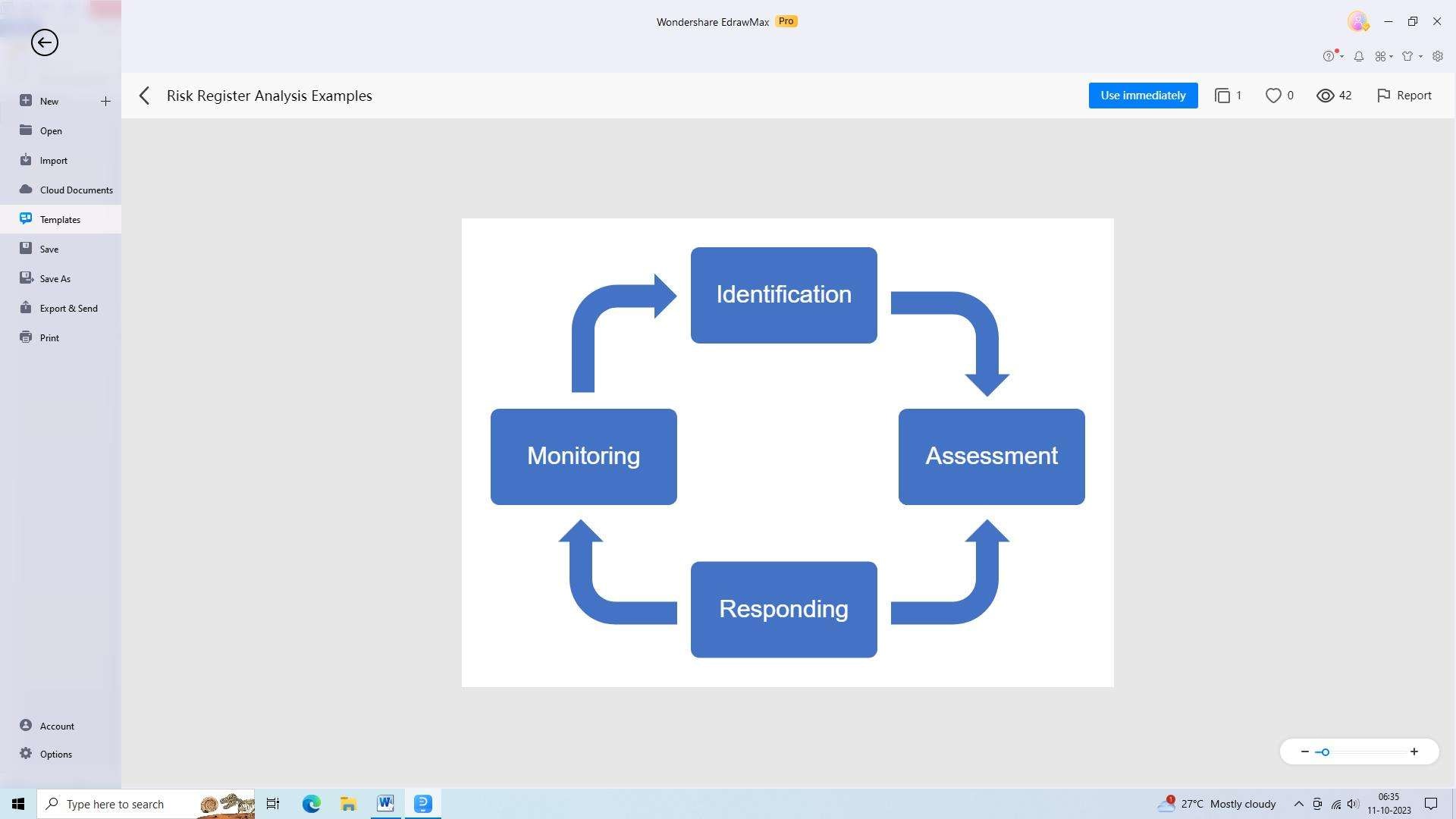
2. Risk Matrix Template
Using this template, one can categorize risks according to their effect and likelihood. It facilitates resource allocation and risk response activity prioritization by enabling project managers to highlight and convey the seriousness of risks.
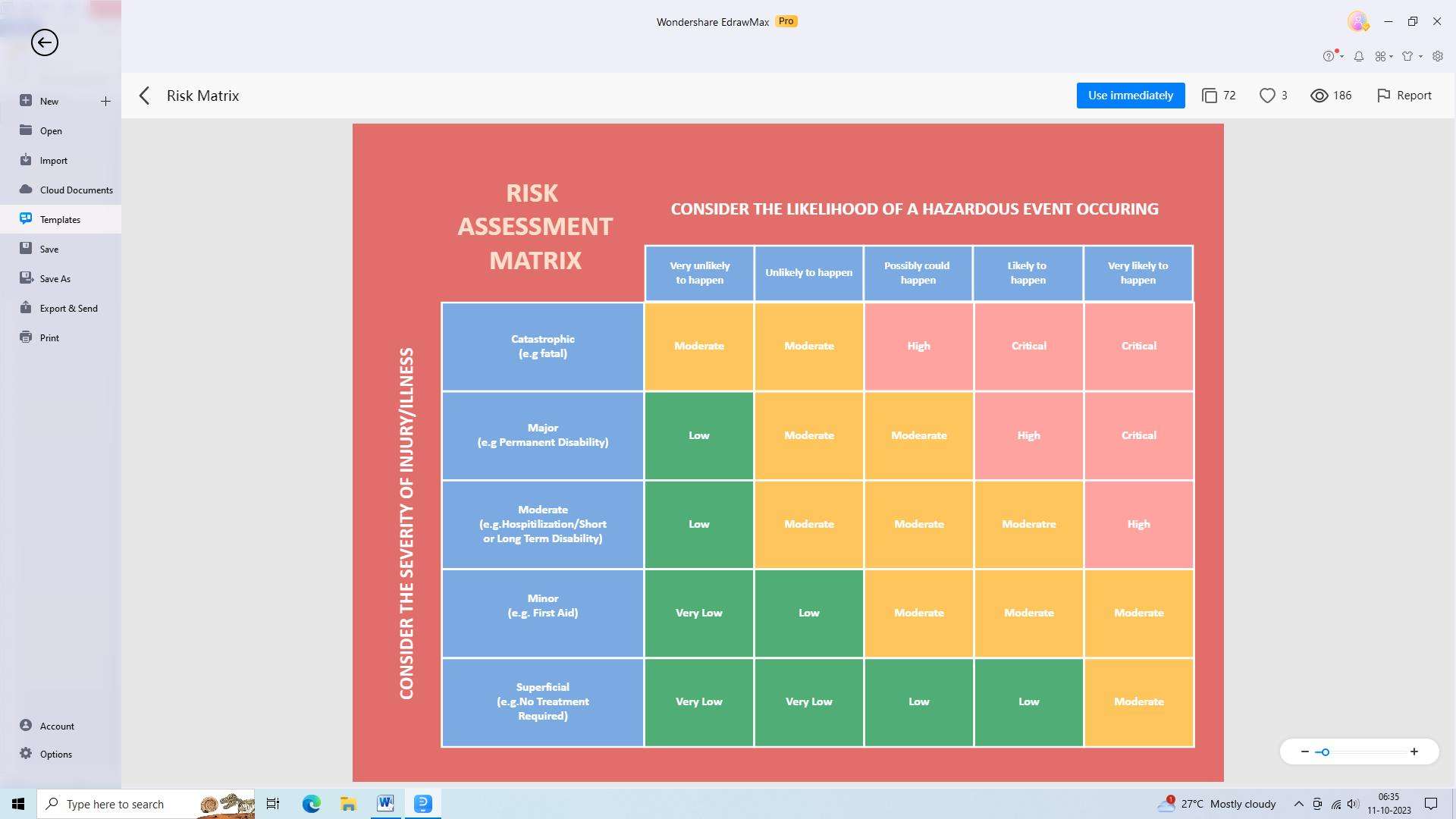
Part 5. Make Project Risk Management Flowchart with Edrawmax
Wondershare EdrawMax is an easy-to-use project risk management plan flowchart creation tool that helps users create professional-looking flowcharts to visualize, assess, and manage project risks. It offers powerful features such as customizable templates and real-time collaboration. It also provides a range of templates to make the process even easier. The steps to create a project risk management flowchart are discussed below:
- EdrawMax is the best software for creating risk management flowcharts. Enter your credentials and log in to the tool.
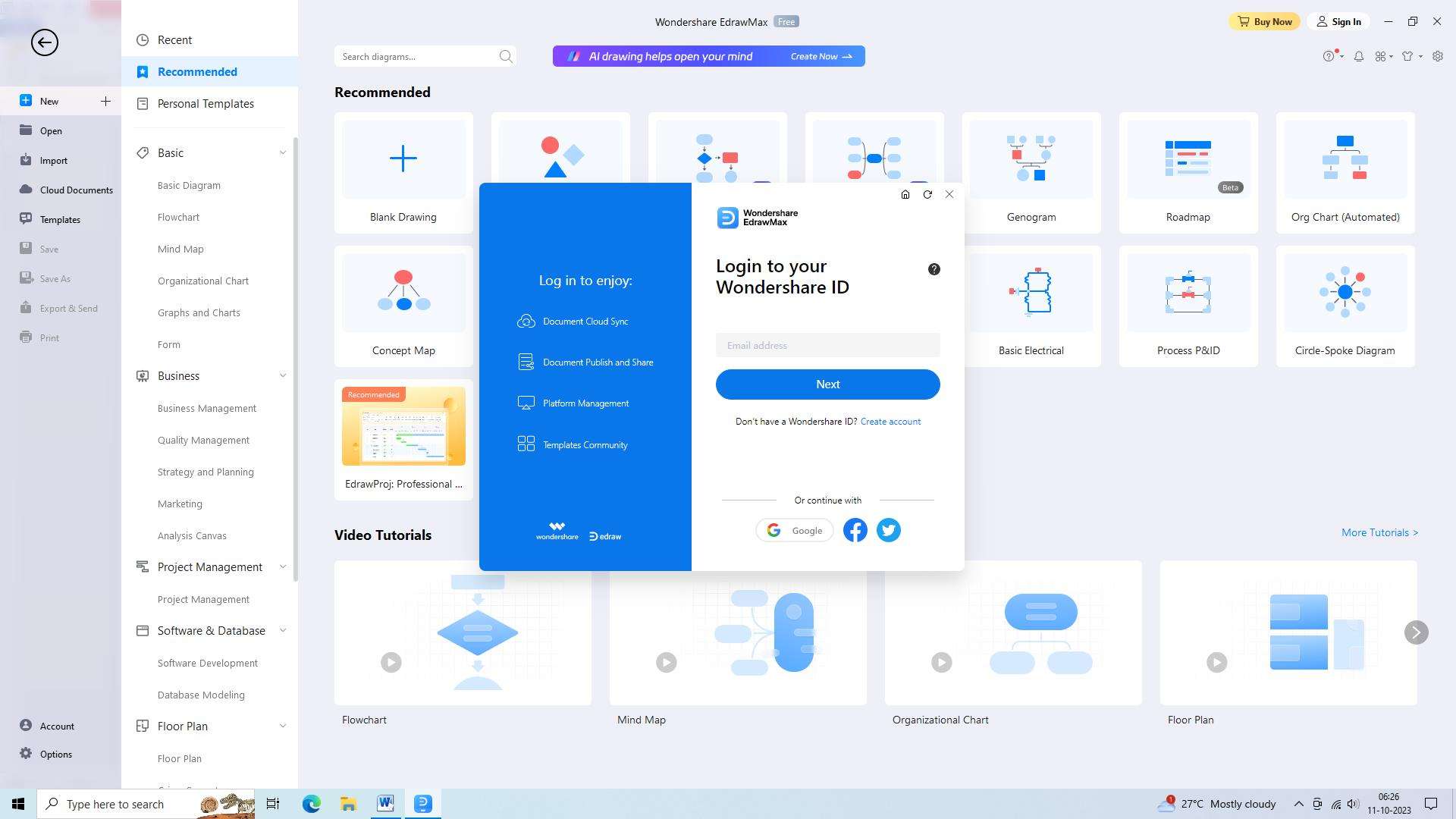
- To begin creating, open a new document. To generate a fresh document by clicking the ‘New’ button.
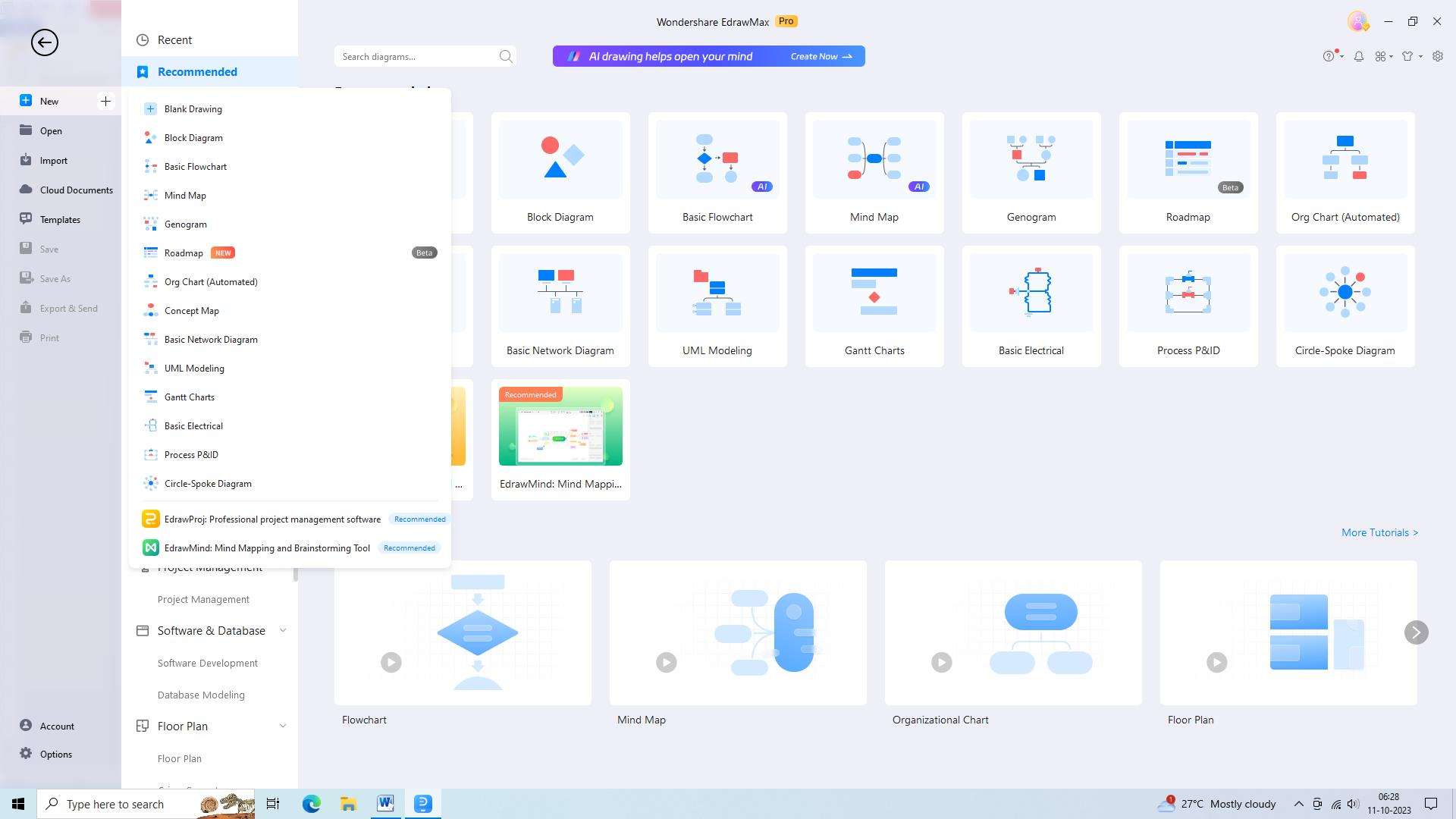
- Click on template button and type ‘project risk management’. Template gallery will open from which any template can be selected according to the requirement.
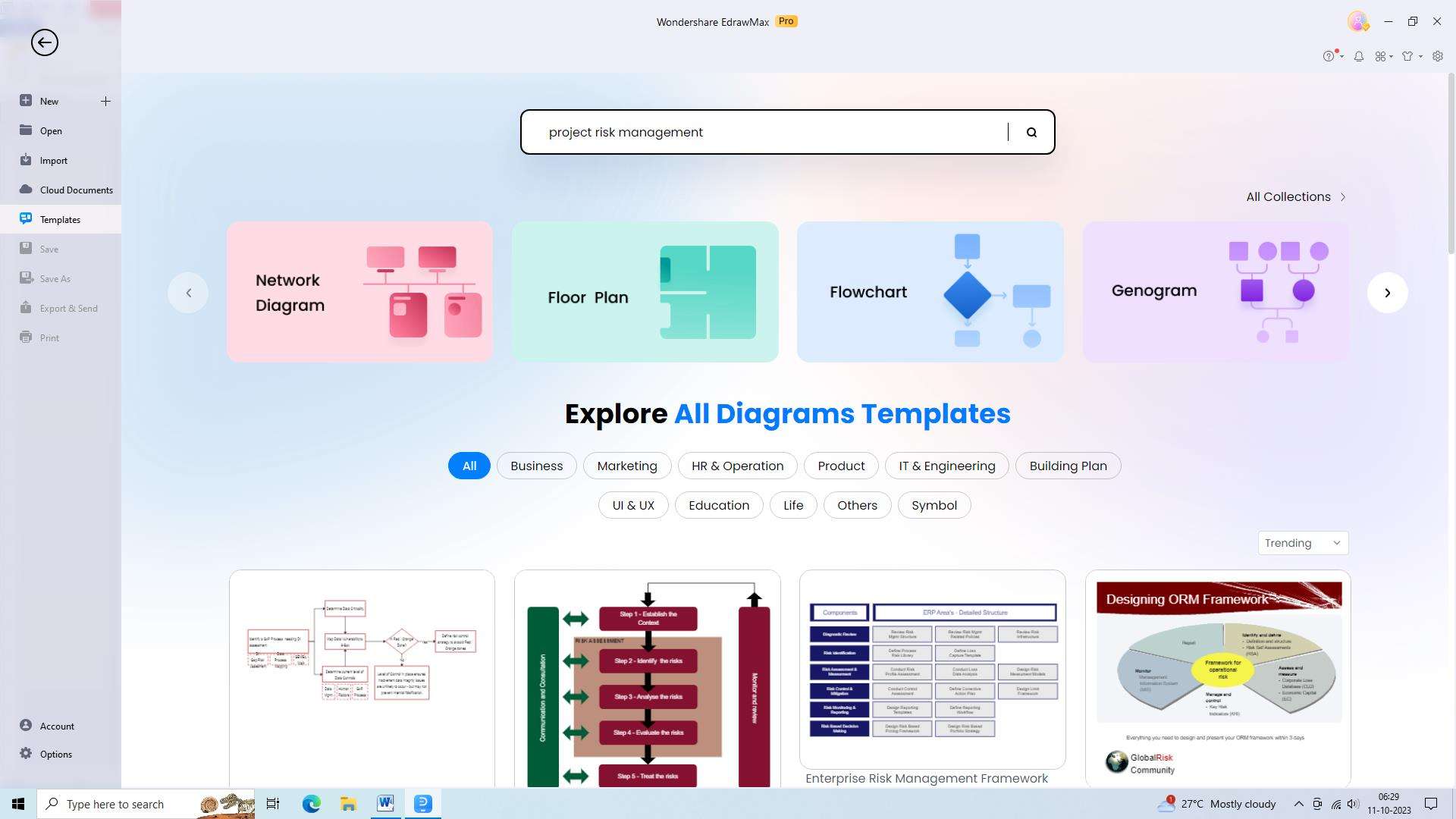
- Check the available templates and decide on the one that best meets your requirements.

- You will be presented with shapes and symbols linked to the topic. Look through the obtainable shapes and symbols to discover the ones that precisely illustrate your project process.

- Make use of the arrow and line tools to link the shapes and build a flowchart exhibiting the process. Experiment with diverse types of arrows and lines to make an attractive and comprehensible flowchart.
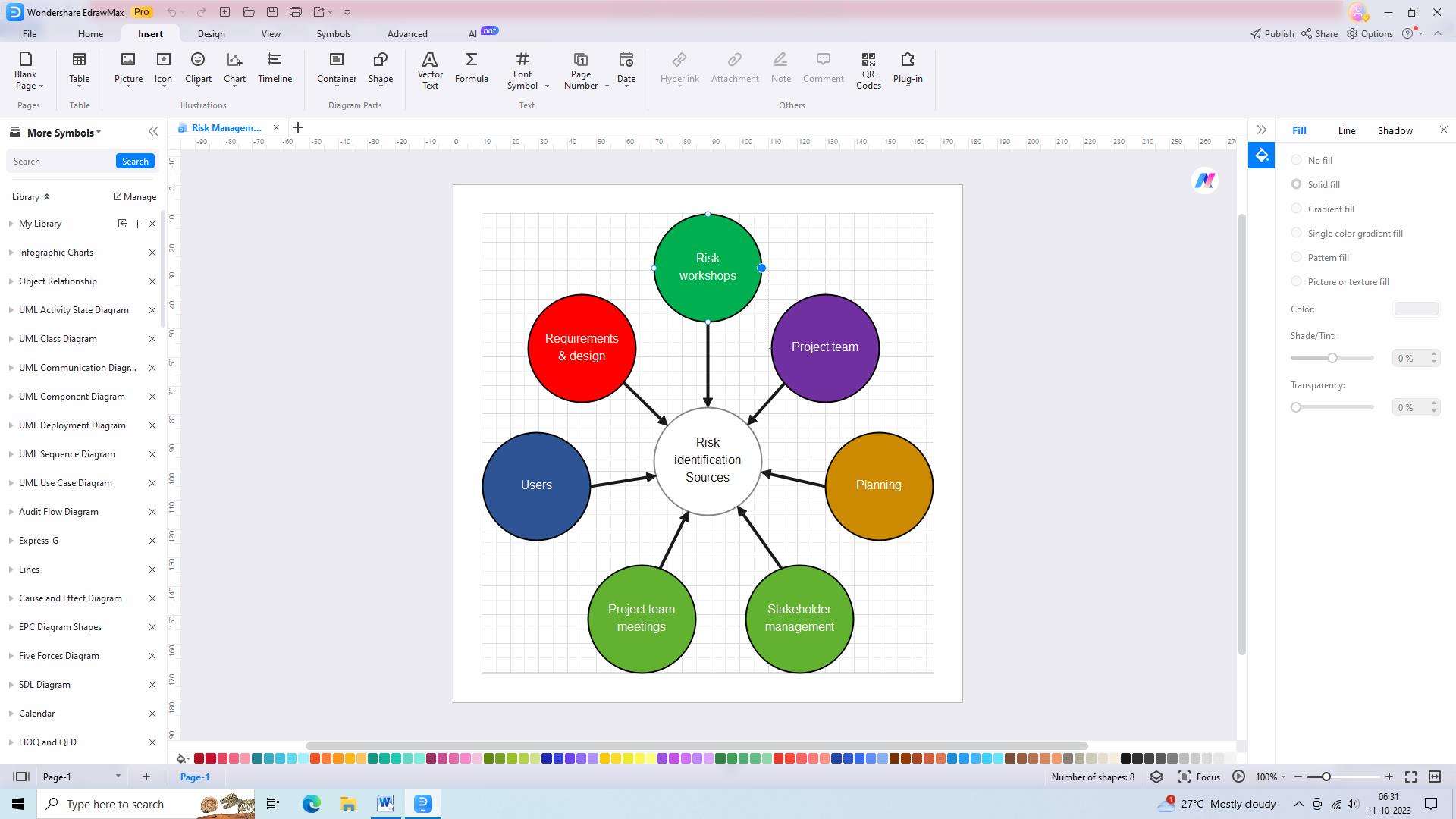
- Double-click on the shapes to personalize them as per your requirements. Modify the shape’s size, color, or text properties to accurately depict the components of your project risk management process.
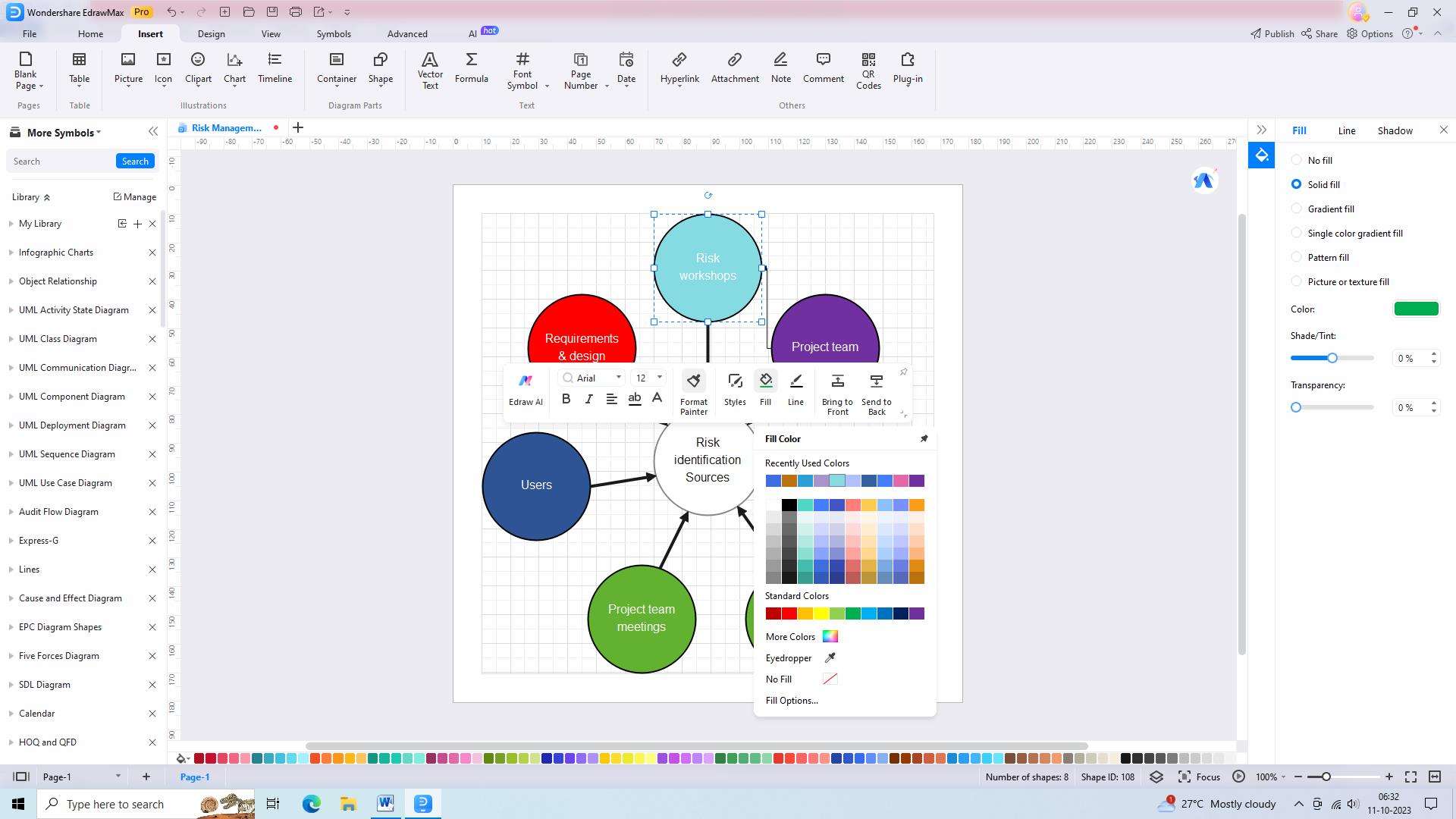
- Test out different color combinations and formatting options to increase the visual appeal and clarity of the chart.
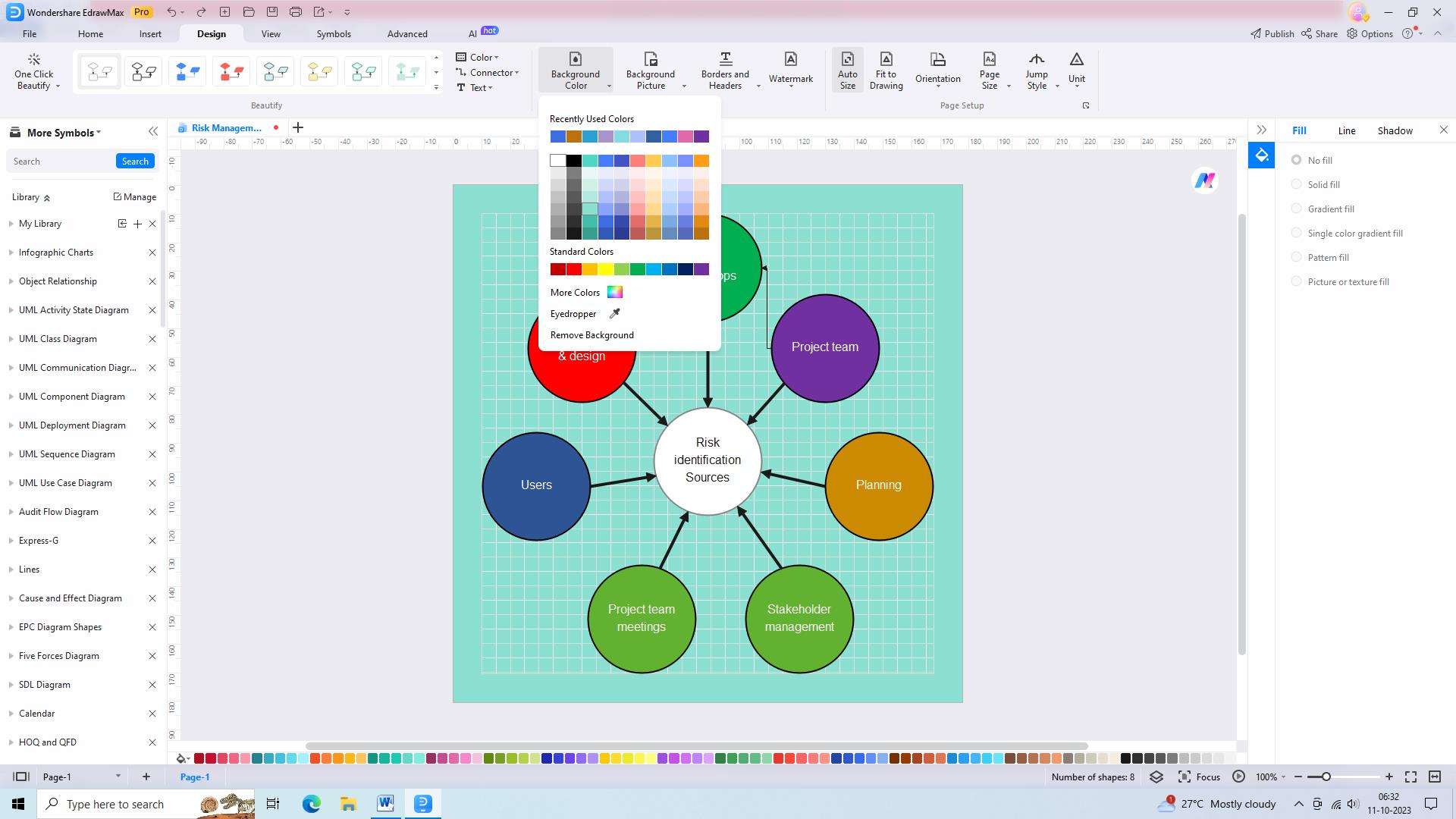
- Use descriptive text to label each component of the flowchart, provide titles for distinct sections, and include descriptions to offer extra context or explanations.
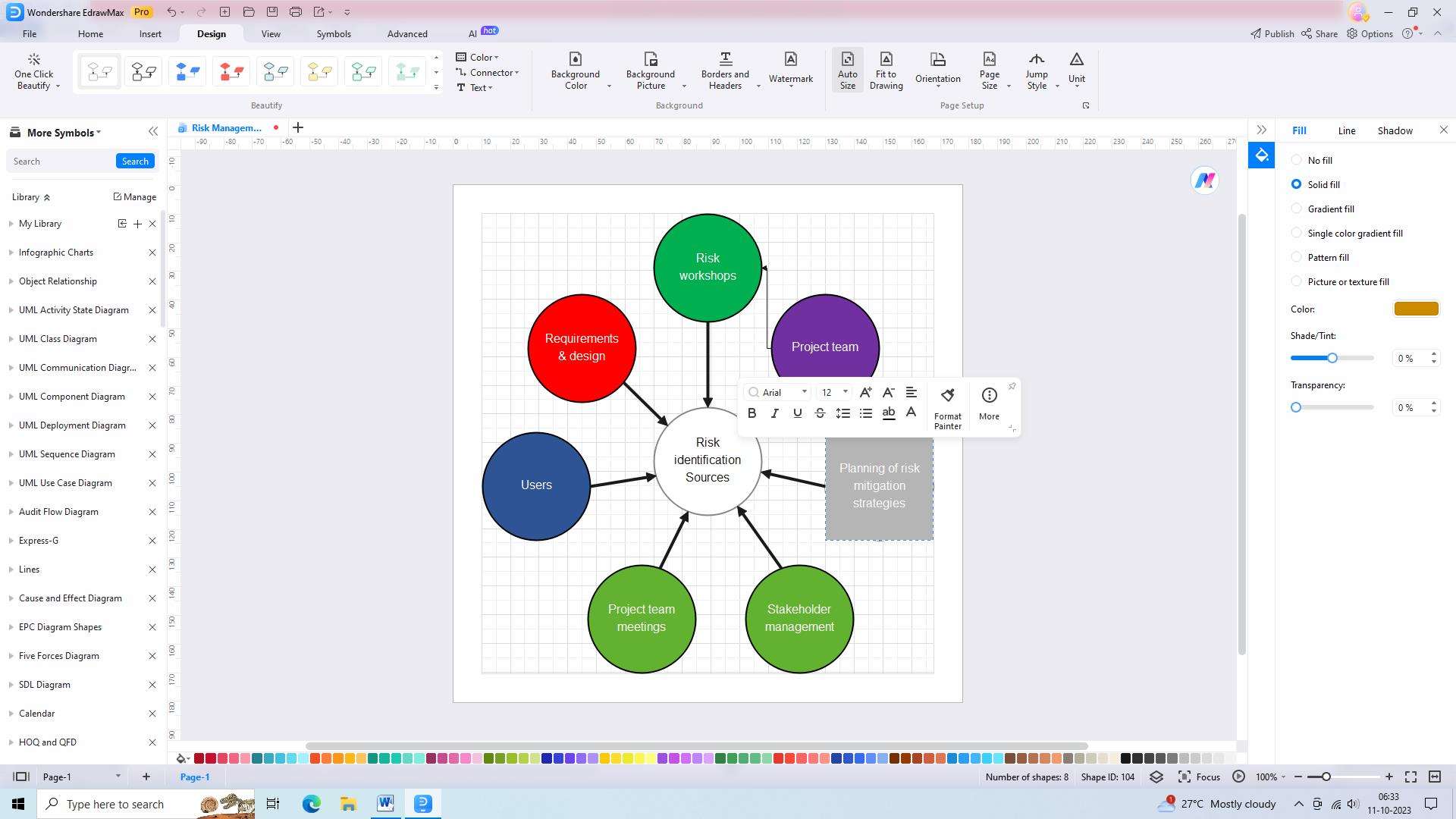
- Pick an appropriate file name and location to store your document.
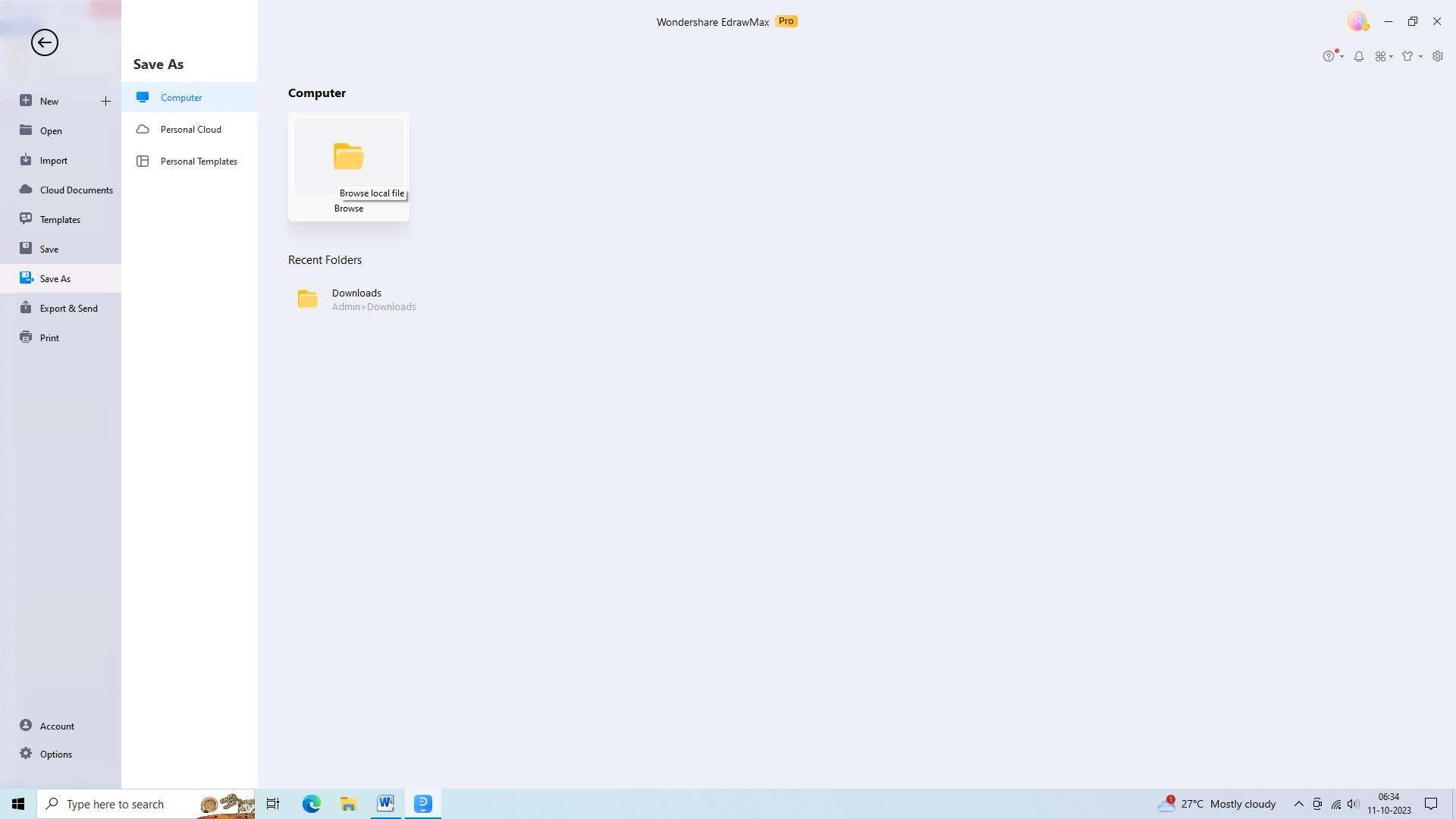
- Then pick out the preferred file format for exporting, for example, PDF, JPEG, or PNG.
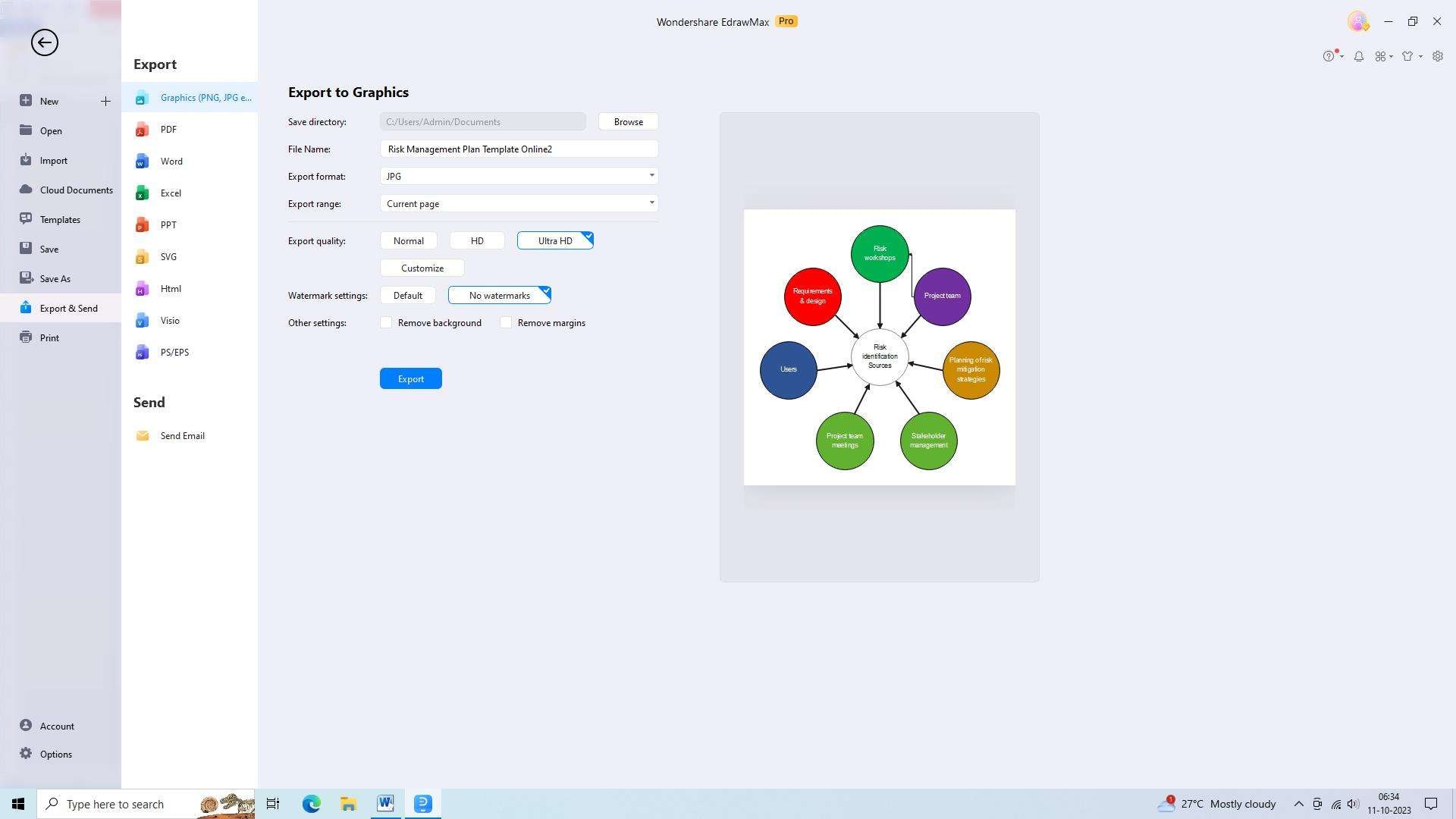
Conclusion
The project risk management process plays a vital role in ensuring projects are completed on time, within budget, and to the required quality standards. By proactively identifying and addressing potential risks, project teams can effectively plan and execute projects, maximizing opportunities and minimizing the adverse effects of uncertainties.

